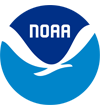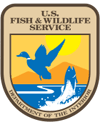|
Rose Atoll Marine National Monument American Samoa |
 |
 USF&WS photo | |
The Rose Atoll Marine National is approximately 130 nautical miles east-southeast of Pago Pago Harbor in American Samoa. Rose Atoll is the easternmost Samoan island and the southernmost point of the United States.
The Monument area consists of approximately 13,436 square miles (34,800 square kilometers) and the outer boundary is approximately 50 nautical miles from the mean low water line of Rose Atoll.
The Rose Atoll Marine National Monument encompasses the Rose Atoll National Wildlife Refuge and has been part of the National Marine Sanctuary of American Samoa since 2014.
Established by Presidential Proclamation in January 2009, the Rose Atoll Marine National Monument is cooperatively managed by the Secretary of Commerce (NOAA) and the Secretary of the Interior (U.S. Fish and Wildlife Service), in cooperation with the Department of State, the Department of Defense, and the Government of American Samoa. The Monument also encompasses the Rose Atoll National Wildlife Refuge and has been part of the National Marine Sanctuary of American Samoa since 2014.
Unique Features
Rose Atoll remains one of the most pristine atolls in the world. The marine environment around Rose Atoll supports a dynamic reef ecosystem that is home to a diverse assemblage of marine species, many of which are threatened or endangered.
One of the atoll's most striking features is the pink hue of fringing reef caused by abundance of coralline algae, the primary reef-building species. Though roughly 100 species of stony corals exist today, crustose coralline algae dominate Rose Atoll's shallow reefs, making them distinctive from those found in other Samoan islands.
The marine area provides isolated, undisturbed nesting grounds for green and hawksbill sea turtles and contains the largest number of nesting turtles in American Samoa. The waters within and surrounding the Rose Atoll Monument are frequented by numerous large predators, such as snappers, jacks, groupers, barracudas, and whitetip, blacktip, and gray reef sharks.
Species that have faced depletion elsewhere, some of which have declined worldwide by as much as 98 percent, are found in abundance at Rose Atoll, including giant clams, Maori wrasse, large parrotfishes, and blacktip, whitetip, and gray reef sharks. Humpback whales, pilot whales, and porpoises have all been spotted at Rose Atoll. There are 272 species of reef fish living within the Monument area, seven of which scientists described for the first time while at Rose Atoll.
With few relatively undisturbed islands remaining in the world, Rose Atoll is one of the last refuges for seabird and turtle species of the Central Pacific.
Source: NOAA Website (May 2023)
|
Establishment Rose Atoll Marine National Monument — January 6, 2009 |
For More Information Please Visit The   OFFICIAL WEBSITES |
Documents
Fact Sheet (undated)
Fact Sheet (undated)
Map (undated)
Map (September 25, 2013)
Proclamation 8337—Establishment of the Rose Atoll Marine National Monument (George W. Bush, January 6, 2009)
Trip Reports: December 2015 • January 2016 • March-April 2016 • September 2016 • December 2016
rose-atoll/index.htm
Last Updated: 01-Jan-2025